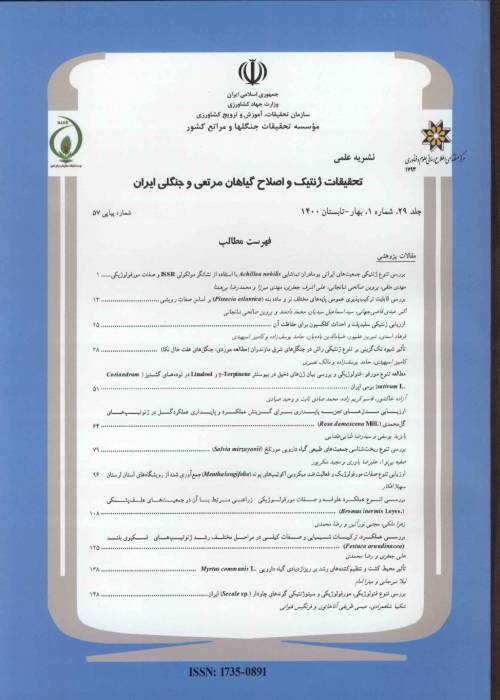Identification of superior genotypes tolerant to drought stress in four perennial cool-season grasses using physiological indices
Grasses are important forage crops, which are used for forage production, pasture establishment, rangeland renovation, and soil conservation. Perennial cold-season grasses have high forage production, are resistant to adverse environmental stress and have broad adaptability in various environments. They are cultivated for various purposes of agriculture and soil protection. The perennial cold-season grasses with relatively deep roots have a long life in suitable conditions. These plants are able to establish and grow with good productivity in poor to moderate soils. The purpose of this research was to identify and select the best genotypes of four perennial cold-season grass species, in terms of physiological response under normal irrigation and drought stress.
In this research, the best genotypes of each species of desert wheatgrass (Agropyron desertorum),bromegrass (Bromus inermis), cocksfoot (Dactylis glomerata) and tall fescue (Festuca arundinacea) were selected in previous trials for both seed and forage yield. For each species, three genotypes were evaluated in a field experiment under normal irrigation at 100% and 50% field capacity (FC), using a complete randomized block design with three repetitions in Agriculture and Natural Resources Research of East Azerbaijan in 2021. Drought stress was applied and at the vegetative growing stage, some key physiological traits such as cell membrane stability (CMS), protein content, content of pigments (Chlorophyll and carotenoid) and water potential under both drought stress and control were evaluated .
The results showed that genotype Fa-G1 in Festuca arundinacea, genotype Bi-G3 in Bromus inermis, genotype Dg-G1 in Dactylis glomerata and genotype Ad-G1 in Agropyron desertorum were more tolerant to drought stress compared to other genotypes within species.
The response of plants to drought stress was different depending on the type of plant. It was suggested that the leaf osmotic potential index could be used as one of the most important physiological indicators in drought stress conditions to identify drought-tolerant genotypes. Generally, Agropyron desertorum, Bromus inermis, Festuca arundinacea, and Dactylis glomerata are the most resistant to drought stress.
- حق عضویت دریافتی صرف حمایت از نشریات عضو و نگهداری، تکمیل و توسعه مگیران میشود.
- پرداخت حق اشتراک و دانلود مقالات اجازه بازنشر آن در سایر رسانههای چاپی و دیجیتال را به کاربر نمیدهد.


